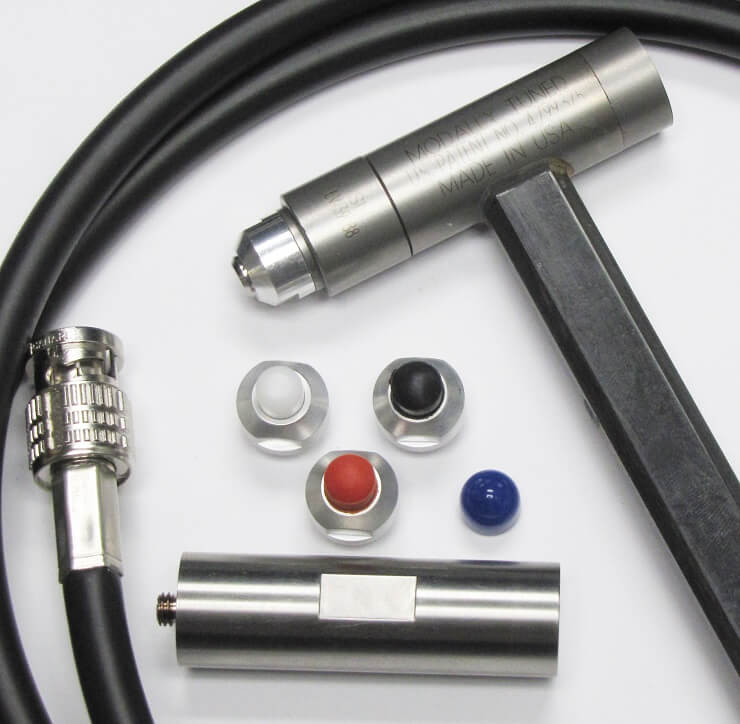Determining the natural frequency of a mechanical system with a Bump Test is a controlled measurement. It is important to understanding the resonance of a system and the effect of a change of mass, a change in stiffness, or a change in damping.

The iBumpTest includes the iBumpTest app, an impact hammer with modular heads for different applications and a cable for use with either our GTI-220 wireless sensor or our wired DAQ solution.
A bump test can be used many places in a wind turbine. A bump test is used to measure natural frequency (resonance) of a machine or structure. The vibration frequency of rotating equipment can excite a natural frequency in other areas, i.e. there are different gear speeds in the gear box. As the speed changes in the main bearing, it can excite a natural frequency in a bearing set that would cause excessive wear. You can also measure resonance of a tower section or the ladder that is excited by another component. The vibration caused by a man lift could possibly cause an excitation of a natural frequency.
The bump test identifies that frequency letting the user or technician change the component that is exciting the frequency (by changing the speed, stiffening, or dampening) or by changing the component that is being effected (stiffening or dampening).
There are many applications. When something is vibrating in resonance it is really a large vibration. It is necessary to identify the frequency to eliminate it.
GTI Predictive Technology is continually developing new apps for its VibePro family. iBumpTest is available as a kit that can be added to any iPad that already uses VibePro. iBumpTest is also available as a standalone kit for new users. Additional hardware is required for standalone kits.
iBumpTest includes the iBumpTest app, an impact hammer with modular heads for different applications and a cable for use with either our GTI-220 wireless sensor or our wired DAQ solution. See a video demo here: https://goo.gl/FulTtU
Filed Under: O&M



